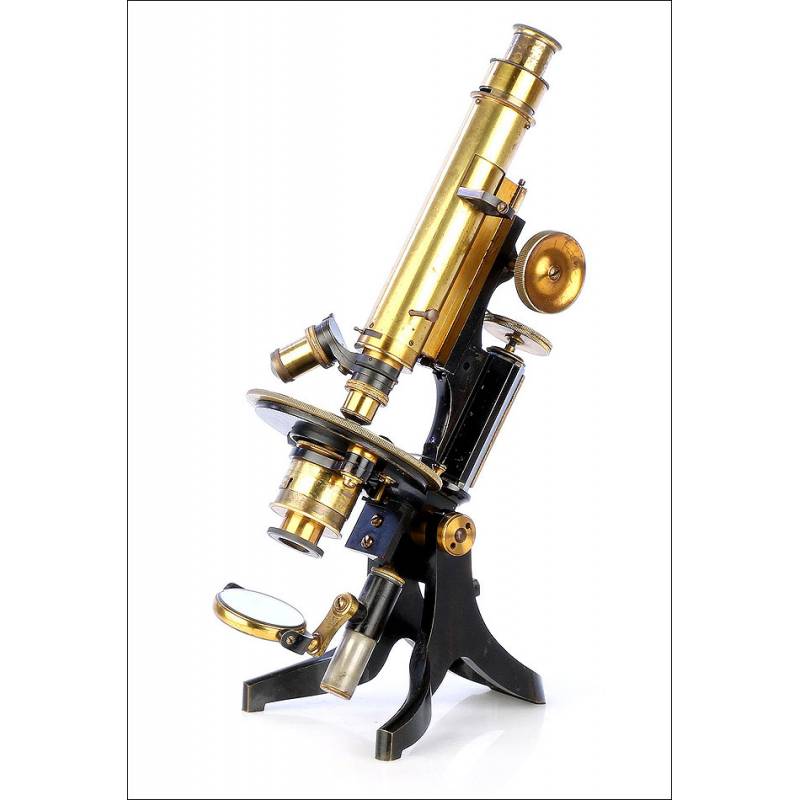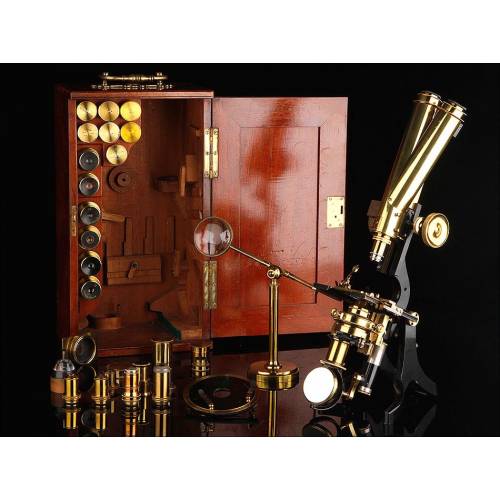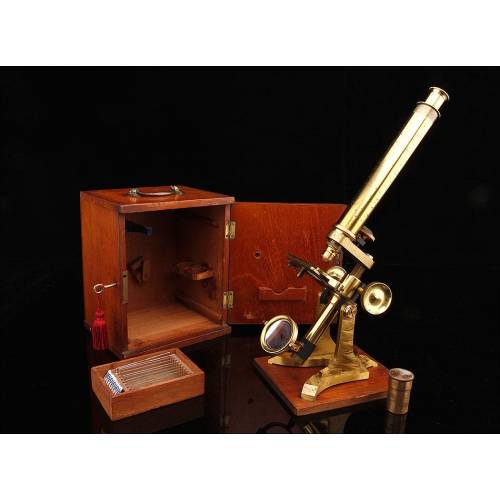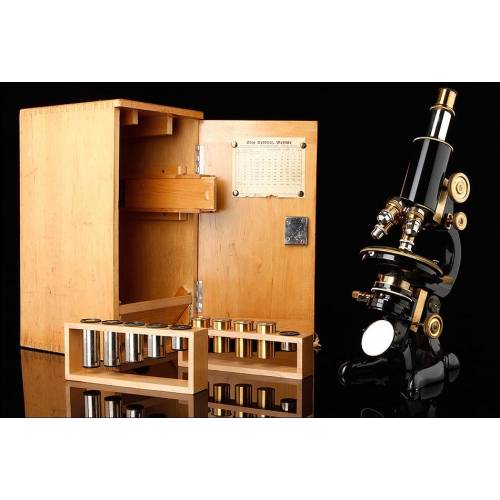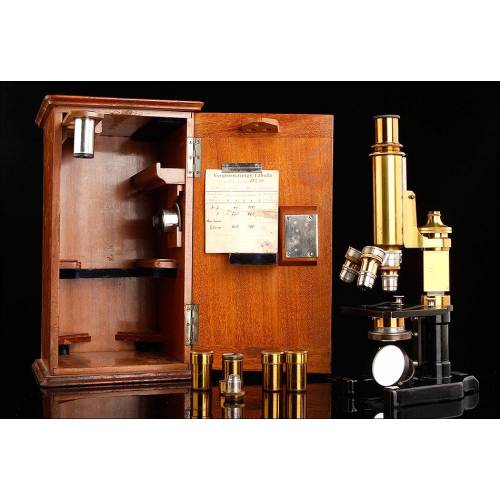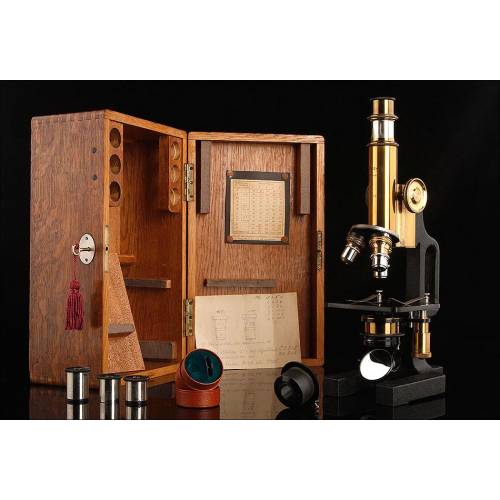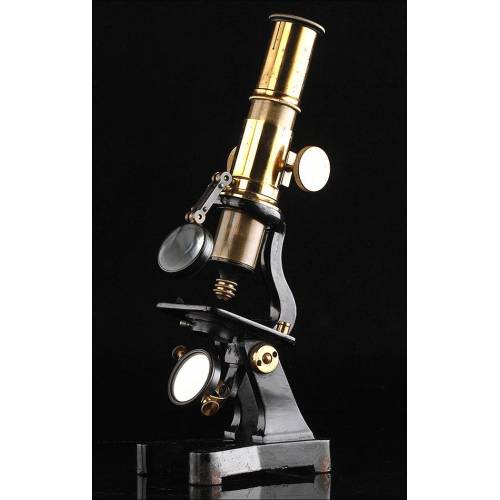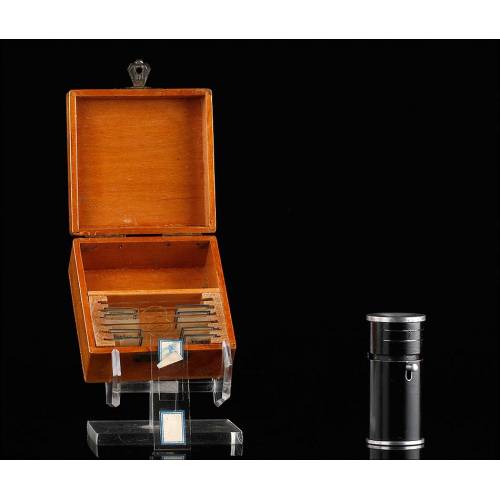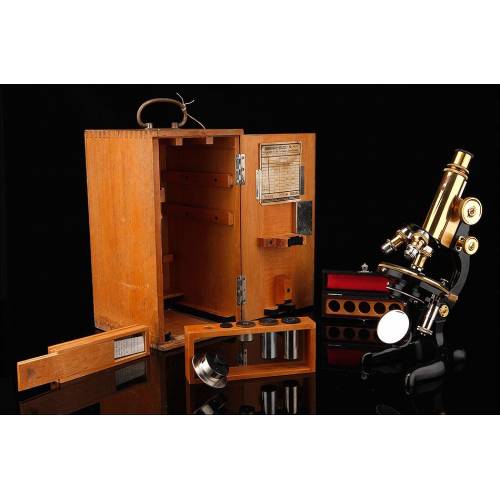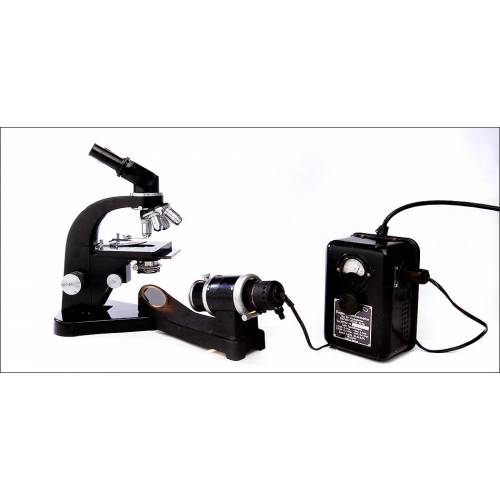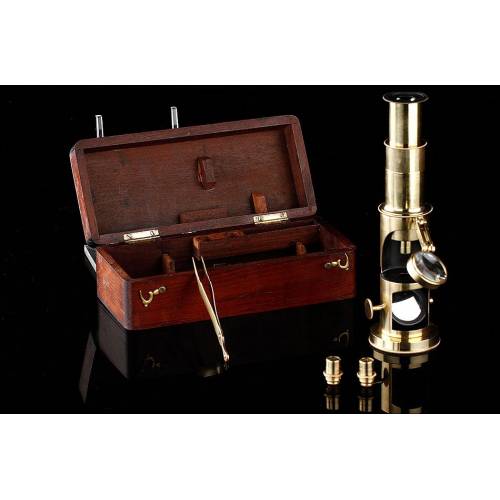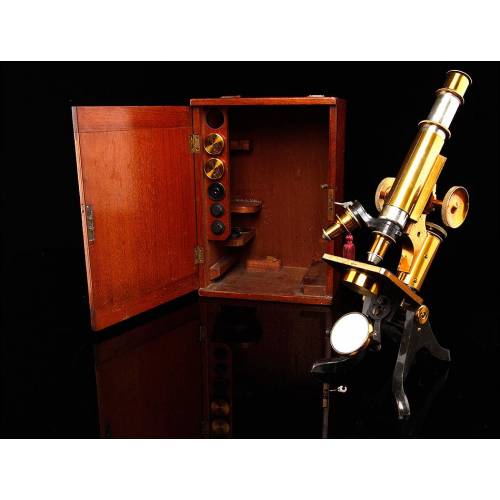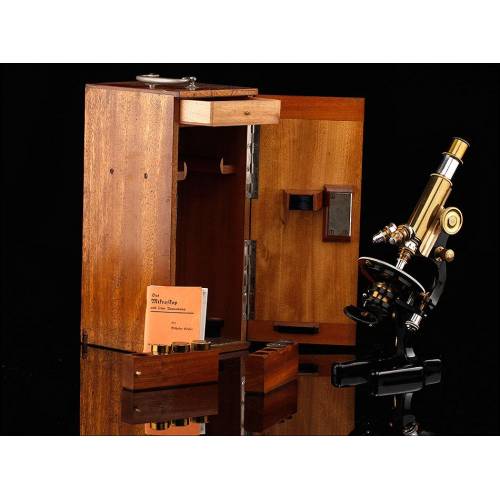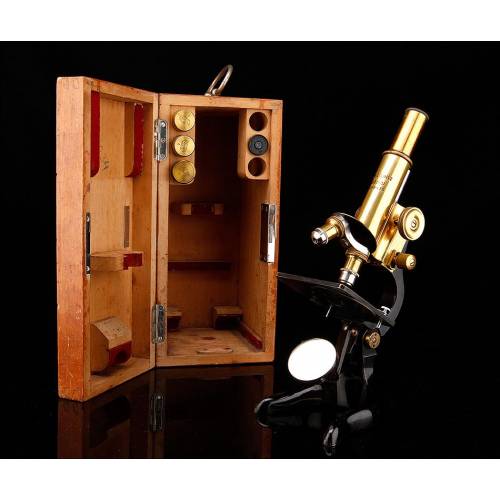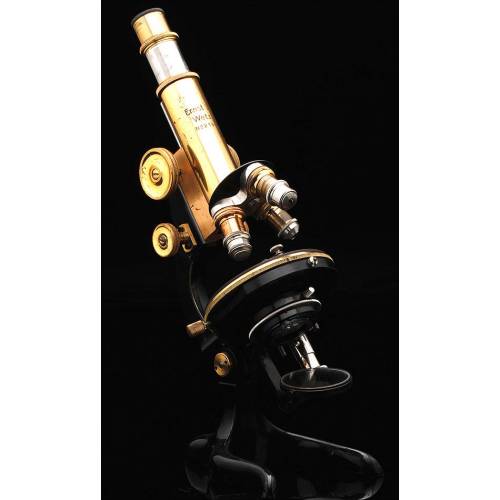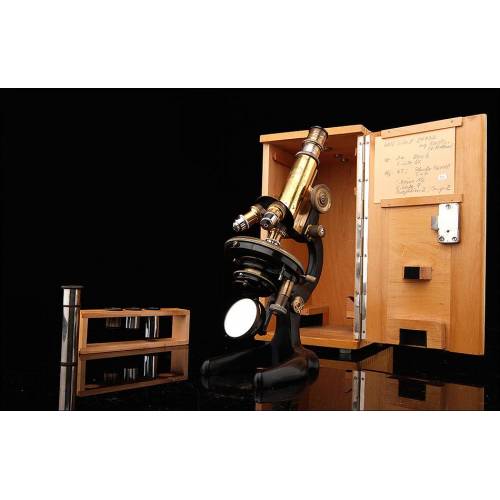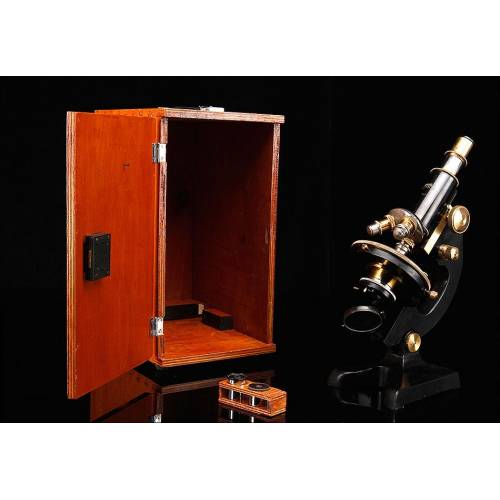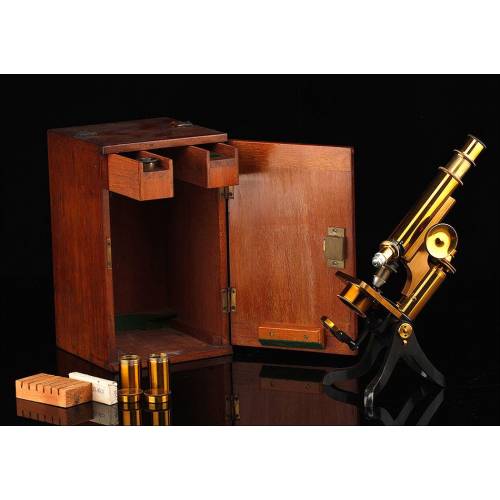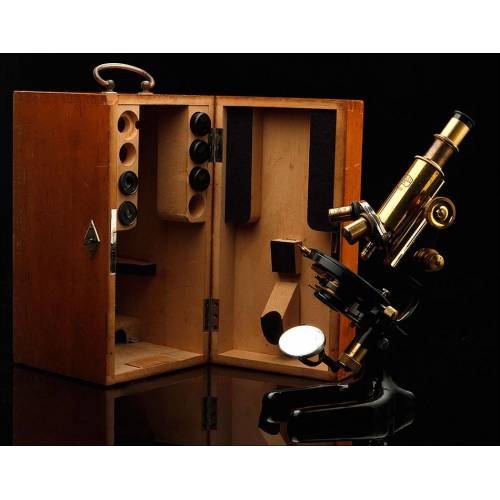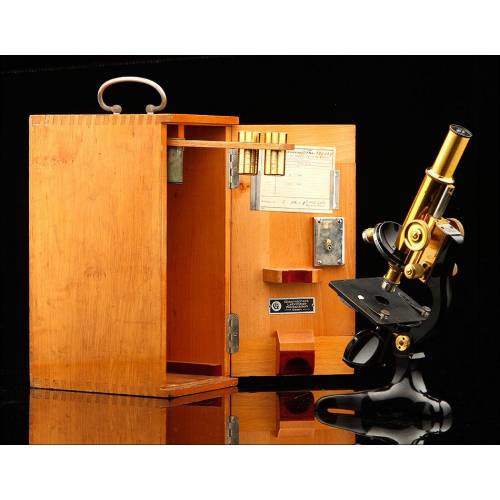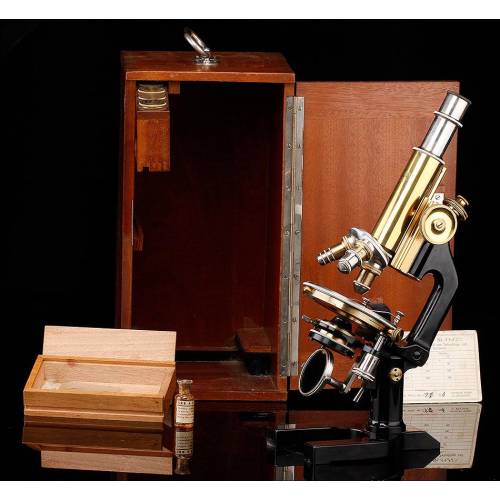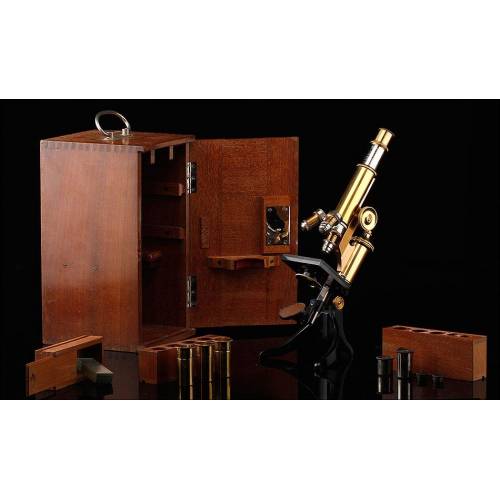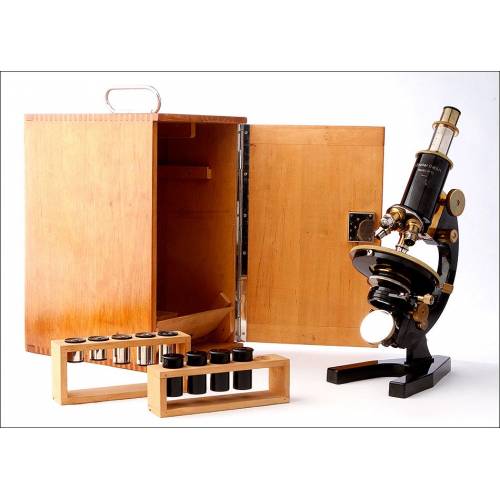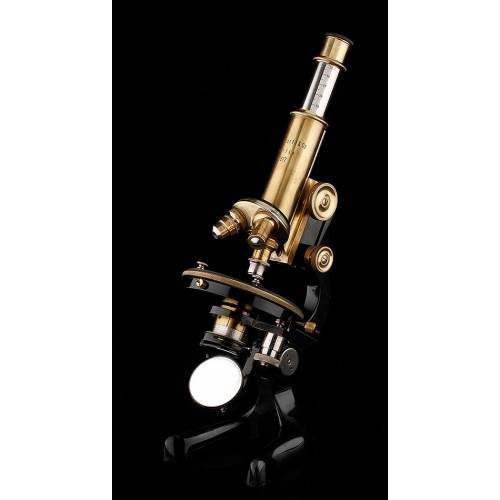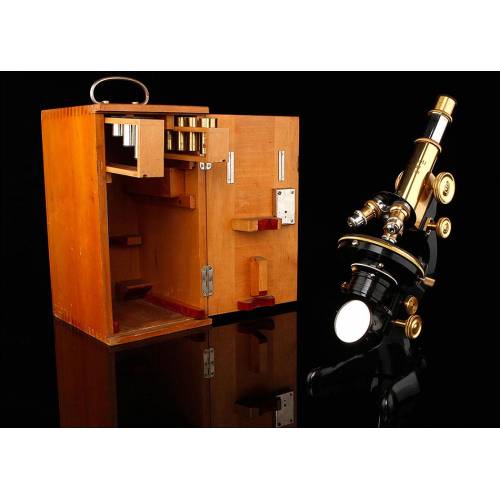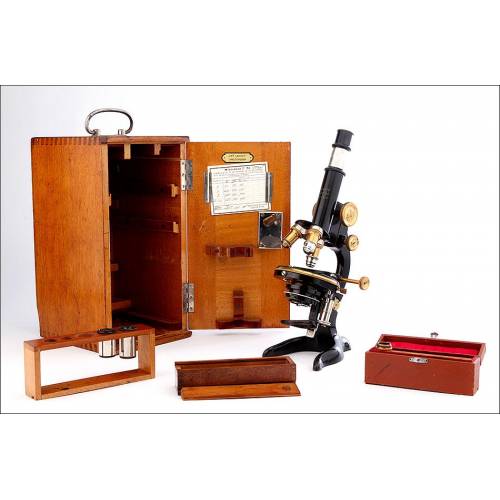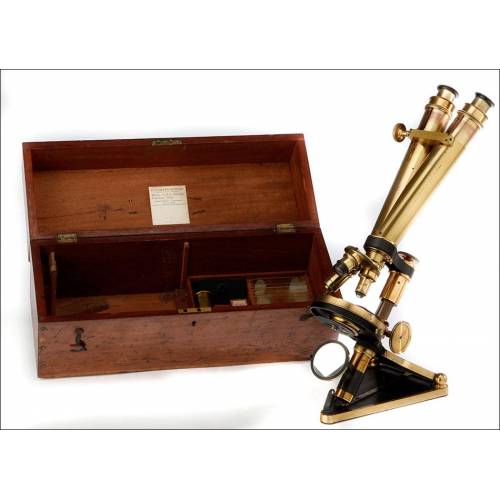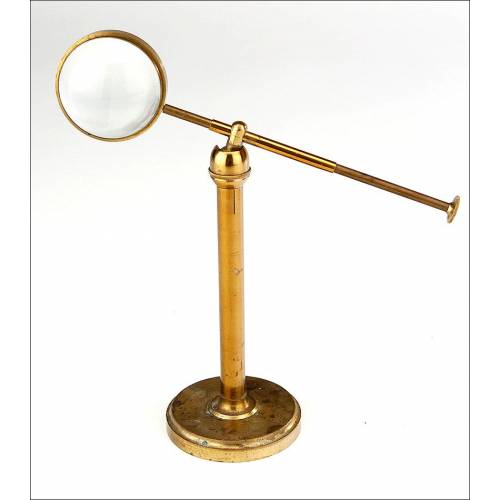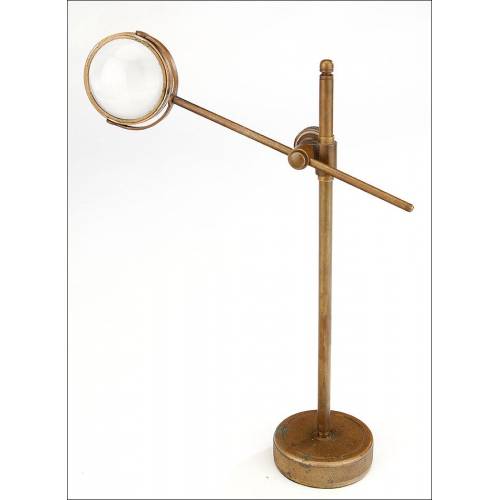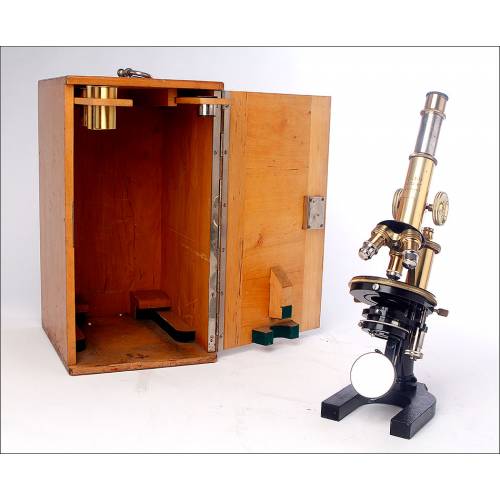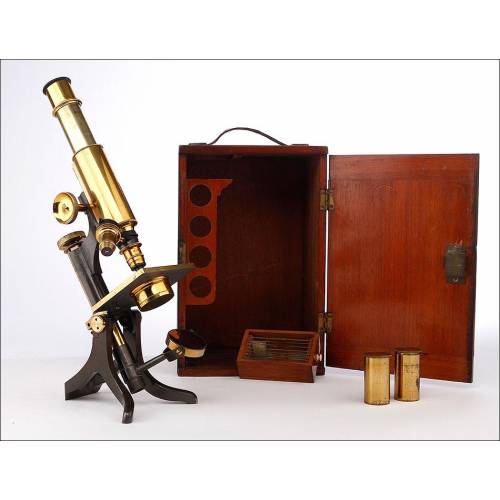C-885
Antique Swift & Son Petrological Microscope. England, 1913
Antique Swift & Son petrological microscope in very good condition. Complete and working perfectly. Collector's item.
Sold!
Antique Swift & Son petrographic microscope made in England in 1913, more than one hundred years old and in excellent condition. Petrographic microscopes are commonly used to identify rocks or minerals cut in thin sections, though they can also be used to watch certain living tissues. The one that we can see in the images comes with two lenses and one eyepiece and is in great condition and working order. The black enamel that cover the iron component parts and the brass pieces are greatly preserved, showing only slight signs of the trace of time and use that provide the microscope with charm and authenticity. Engraved at the microscopes foot we can see the engraved inscription J. SWIFT & SON LONDON, and the serial number 13025 too. This serial enables us to date this article in 1913. As it usually happens with turn-of-the-century devices, this microscope combines black-enameled iron pieces and brass component parts. The brass preserves the original transparent finish that provides it with a deep warm shade. The turret mounts a two-lens revolving nosepiece; the lenses bear the engraved manufacturers name. The microscope preserves the prism, the double-sided mirror and the sample stage in good condition. Every collector will feel proud to own this amazing antique Swift & Son petrographic microscope, a beautiful and functional item. Measurements: Bases Width: 6.4 in / 16 cm. Height: 15.6 in / 39 cm.History of J. Swift & Son microscopes The history of the J. Swift & Son microscope business starts out in 1853 when James Powell Swift, who had been an apprentice with Andrew Ross, opened his own business in London together with his brother Mansell Powell. In 1872 the business was located in 43 University Street, near Tottenham Court Road. In 1872 James Swifts brother, Edgard, entered the company to manufacture lenses. In 1881 the business moves to its definite location in 81 Tottenham Court Road, London W. In 1903 the founders grandson, Mansell Powell Hohn Swift, joins the company; three years later James Powell Swift dies. In 1912 the company is incorporated as a limited company. After many vicissitudes, in 1946 E.R. Watson & Sons takes over the firm. Eventually, in 1968 John H. Basset, who entered the company in 1949, purchased the firm and joined it to its own microscope business.

